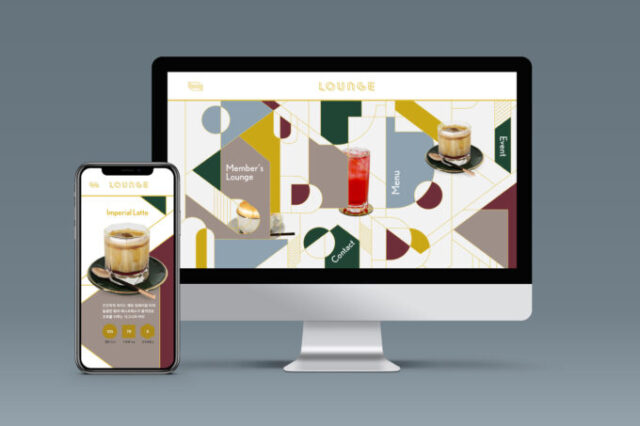
Your brand identity is one of the most important things in your business, so it’s crucial that you get it right. It’s the one thing that makes you immediately identifiable to your customers. When you first start building it out, make sure to take everything into consideration.
Being consistent with the way you present yourself will set the tone for a strong brand. The last thing you want is to confuse potential customers. Whether it’s your first time branding your company or if you’re undertaking a rebrand, there are questions you can ask yourself to make sure you stay on the right track.
1. What is Your Brand’s Story?

Every brand should have a story. There’s a reason you started your business in the first place. How did it come to be? What is your company’s purpose? What does it mean to you? What are your company’s values? What is its mission? There are countless ways you can tease out your brand story. If there’s one thing marketing has taught us, it’s that stories help you connect to your target audience.
It’s the thing that will make a customer buy from you instead of your competitor. If two companies are created equal, both offering great products and great service, at similar price points, how does a customer choose? The customer will choose the brand that they connect to. According to Hub Spot, stories can activate 7 regions of your brain, which means it has the ability to motivate people to take action. A story that connects with people can have a direct correlation to sales.
2. What Messaging Do You Want Your Brand to Portray?

As a business, you’ll need to have an online presence to thrive. This could be made up of various components, but at the minimum, you’ll want a good quality website and some social media channels. This will give your business visibility. First, you’ll need to get all those various things set up. A website won’t be too difficult to get up and running, as long as you invest in a good web design company (click here to learn more about website design services and solutions).
As for social media channels, you’ll have to decide which ones fit with your brand and which oneappeals to your target audience. Once you’ve established which mediums you want to be visible with, you’ll need to decide on your messaging. What tone do you want to convey? Is your brand more serious or is it on the fun and light side? How do you want your brand to be portrayed? Once you decide which direction you want to take things in, you’ll want to stay consistent through all touchpoints.
3. What Information Have You Collected on Your Target Audience?

Any good business knows the importance of data, especially as it pertains to your target audience. They’re the ones you’re selling to, so the more you know about them, the easier it will be to sell to them. When building your brand, it’s a good idea to comb through your data and see what types of patterns you can identify. Who’s buying your product and services? Ideally, you’ll be able to create a few different customer personas. Once you’ve created those from your data you can use targeted brand messages for each.
4. What Are Some of My Favorite Brands and Why?

While you never want to copy something that someone else is doing, inspiration is totally okay. That’s often where some of the best ideas evolve from. What are some of your favorite brands?
They don’t have to be in your niche, but it’s okay if they are. Pick anywhere from 6 to 12 and take notes. What do you like about them? How do they portray themselves? How do they interact with customers? Use the things you like as a launchpad for your own ideas and how some of them can be incorporated in your industry.
5. In What Ways Do You Want to Be Different from Your Competitors?

In the last exercise, you looked at brands you liked. But now it’s time to look specifically at your competitors. How are you different than they are? How can you separate yourself from what they’re doing to show potential customers that you’re the best choice? Find what makes you different and brand yourself showing your advantage. If you need any help with seeing who your competitors are in northern California, you should check out a branding agency in SF.
There are many ways that you can be different from your competitors, but here are a few key principles to keep in mind:
• Be authentic: Stick to your values and beliefs, and make sure that they are reflected in the branding and marketing campaigns you run.
• Be unique: Don’t copy your competitors wholesale; find a way to make your brand stand out. Think about how you can differentiate yourself from the competition.
• Make connections: Connect with your customers on a personal level, and build relationships that go beyond simply selling products or services. This will help you stay top of mind, and cement your place as an authority in your field.
6. What Problem Does my Product or Service Solve?

In order to sell a product or service, your business has to answer a need. A customer buys a mop because they want clean floors. In this case, a dirty floor is the problem and buying a mop is the solution. You need to be able to clearly articulate what your customer’s problem is and how your product or service helps them solve that problem.
From there you have to ask yourself if anyone cares. Maybe your product or service resolves a problem, but maybe it’s one that nobody really cares about. Is it the best solution to that problem? Is anyone doing it better or more efficiently? All of these things are tied to your brand. our product or service is what people will associate you with.
7. How Would Your Employees Describe Your Business?

Oftentimes we see things differently than other people do. If you were to ask an employee to describe your company’s vision and/or mission, would it be the same as your answer? There’s a lot of value in getting other people’s points of view. It allows you to see things through the eyes of others. It can also help you identify gaps you never knew existed. Don’t be afraid of critical feedback.
Being able to identify areas of weaknesses eventually becomes strengths. The more information you’re equipped with, the better you can streamline your messaging and take away any possible confusion. The last thing you want is for potential customers to be confused.
8. What Visual Do You Want People to Associate with Your Brand?

We’ve all heard people say your logo is not your brand. While this is true, the logo is a visual representation of your brand – as are any graphics or images on your site. Take time to ask yourself what you want the visual representation of your brand to look like. Do you like dark colors or light colors? Is there a certain emotion you want to evoke from potential customers?
Do you like muted designs or bold ones? Are certain images more favorable than others? When thinking of design, don’t just think of what you like, try and think of what your customers would like. Ideally, you’ll want something memorable. Human beings are visual creatures. That’s why estimates suggest that pages with video or images get 94% more views than those with text only. That’s why you’ll want to ensure that design is a strong component of your brand.
9. Should I Invest in a Good Web Design Company?

If you’re serious about growing your business, the resounding answer to this is YES. Some businesses will try to go the DIY route, but unless you have some serious design skills, this is never a good idea. Do you really want your brand associated with something you slapped together in a weekend? Your customers won’t take you seriously and neither will anyone else. Yes, it can be a big investment, but one that will definitely pay off in the long run.
10. Where Do You See Your Brand in 5-10 Years?

When in business you can’t just think of the short term. You also have to plan for the long term. Is the brand your putting forth now, still apply in 5-10 years? Have you allowed room for your business to grow under your current brand? For example, let’s say you brand yourself as a personal chef, but in a few years you decide that you want to give corporate cooking lessons.
Does your current branding allow for that? Will you need to rebrand? Rebranding doesn’t have to be a bad thing, but it’s always good to take these factors into consideration early on. If you have a plan for growth, you may very well be able to suit your branding to allow for some flexibility. The key is knowing as much as possible, as early as possible.
Having a strong brand has a host of benefits. For one, it’s associated with customer loyalty. In addition to that, you’ll be able to command better prices for your products and services, you’ll have the ability to attract top talent, and you’ll be able to form strategic partnerships. The power of branding has the potential to skyrocket your business. That’s why it’s so important to ask all the big questions upfront. You want to make sure it’s done right to position your business for success.
Afterthought
When it comes to building a brand, it’s important to think about your target market and what will resonate with them. That means creating a brand identity that is authentic to you and reflective of the values and messages you want to send out. Hopefully, these questions have given you some guidance on starting down the path of developing your very own unique brand identity.













